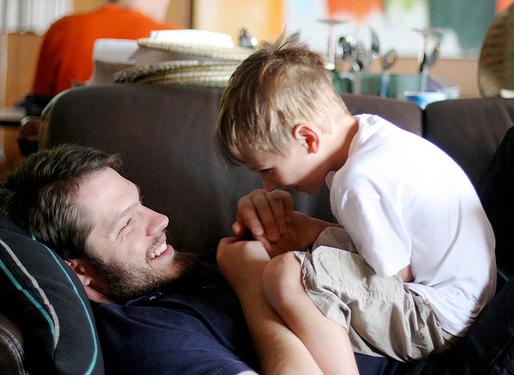Rationale:
When children are alert and paying attention, they are at the best level of arousal for learning. Thus, it is important to be attentive to signs that your child is becoming over or under-aroused and to modify your own behavior to maintain the optimal energy level. By being attentive, you can catch these signs early and help your passive child become more engaged or calm your child before he becomes overexcited.
Signs of over-arousal: your child is no longer listening or responding to you; running around, yelling, may become destructive or aggressive.
Signs of under-arousal: neutral facial expression sits or lies around, stares out window or at hands.
If you child is becoming over-aroused, you can help slow things down by slowing and calming your own play, singing softly, rocking or hugging gently. An under-aroused child can be encouraged to energize with lively sensory social routines such as bouncing, jiggling, and fast paced songs, by exaggerating your emotions, and by sensory objects with “big” effects.
Understanding Your Child’s Behavior: Reading Your Child’s Cues from Birth to Age 2
I know I am optimizing my child’s energy level when:
- I am consciously aware of my child’s arousal level and respond to over excitement or waning interest early.
- I can respond to over-arousal with calming techniques.
- I can use sensory social routines to increase my child’s arousal level when needed.
Back to Module 2 Module Summary and refrigerator posts


